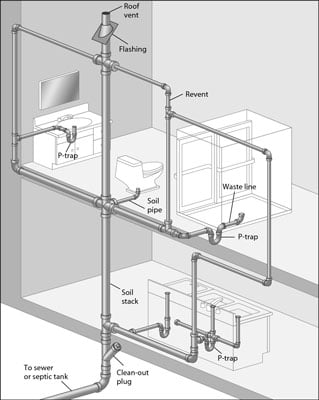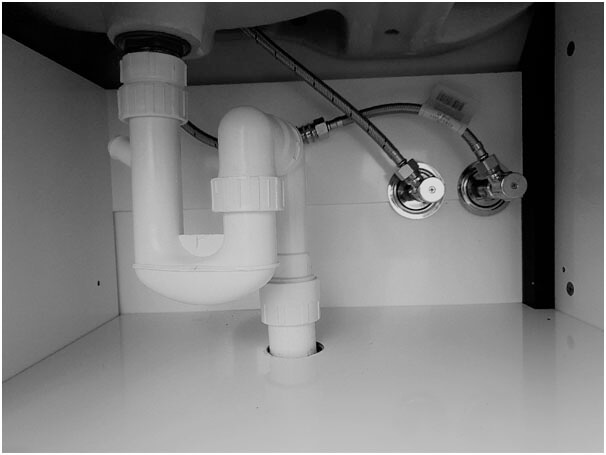Achieving Adequate Ventilation in Your Plumbing System: Why
Achieving Adequate Ventilation in Your Plumbing System: Why
Blog Article
This article further down relating to What Is A Plumbing Vent & How Do They Work? is highly insightful. You should give it a look.

Proper ventilation in pipes systems is typically overlooked, yet it is essential for preserving the capability and safety of your home's pipes. Air flow assists manage atmospheric pressure, stop the accumulation of hazardous gases, and make sure the effective elimination of waste. In this guide, we will check out the value of proper plumbing air flow, how it works, and the advantages it gives your pipes system.
Recognizing Ventilation in Pipes
Air flow in pipes describes the network of pipes that allow air to stream with the drainage system. These vents serve multiple purposes, including regulating air pressure within the pipelines, avoiding sewer gases from getting in the home, and aiding in the smooth circulation of wastewater.
Exactly How Air Flow Works in Pipes Solutions
Air Pressure Guideline
Proper air flow maintains balanced atmospheric pressure within the pipes system. When water flows via pipelines, it displaces air. Without sufficient ventilation, this displacement can produce negative pressure, resulting in slow drains or siphoning of water from catches, which can create unpleasant odors to seep right into the home.
Preventing Sewage System Gas Build-up
Among one of the most crucial functions of plumbing vents is to stop sewage system gases, such as methane and hydrogen sulfide, from collecting within the home. These gases can pose significant health and wellness dangers and are highly flammable. Vent pipes permit these gases to run away safely outdoors.
Helping in Waste Elimination
Ventilation helps in the reliable removal of wastewater by stopping airlocks in the drain system. When air can flow openly via the vents, it enables water and waste to flow efficiently with the pipes, minimizing the risk of blockages and backups.
Kinds Of Plumbing Vents
Key Stack Vent
The major pile air vent, likewise known as the vent pile, is the main vent in a plumbing system. It extends from the primary drain line up with the roof, allowing gases to run away and fresh air to enter the system.
Branch Vent
Branch vents connect to the major pile air vent and serve individual components, such as sinks, toilets, and showers. These vents make sure that each component has adequate ventilation to function appropriately.
Air Admission Shutoff (AAV).
An Air Admission Shutoff (AAV) is a one-way valve that allows air to go into the plumbing system without the demand for a conventional air vent pipe extending with the roofing system. AAVs are generally used in renovations or locations where setting up a basic vent is impractical.
Signs of Poor Air Flow in Plumbing.
Slow Draining Fixtures.
If your sinks, bathtubs, or commodes are draining slowly, it could be an indicator of bad ventilation. Inadequate air flow can develop a vacuum effect, making it challenging for water to drain properly.
Gurgling Seems.
Gurgling noises coming from drains pipes are commonly a result of air being drawn with water catches as a result of adverse pressure in the pipelines. This is a clear indication of not enough air flow.
Unpleasant Odors.
Drain odors inside your home are a warning that your pipes system is not appropriately ventilated. This can suggest that sewer gases are not being properly aired vent outside, resulting in possibly hazardous problems.
Usual Air Flow Errors.
Inadequate Vent Sizing.
Making use of undersized air vent pipes can bring about inadequate air circulation and stress inequalities in the system. It's important to use vents that meet the particular needs of your plumbing system.
Improper Vent Positioning.
Putting vents too far from the fixtures they offer can decrease their effectiveness. Appropriate placement guarantees that air can move freely and efficiently with the system.
Disregarding Code Requirements.
Building regulations supply particular guidelines for pipes ventilation. Disregarding these codes can lead to a system that fails to work properly and might cause expensive fixings or carcinogen.
Advantages of Appropriate Ventilation.
Enhanced System Efficiency.
Properly aerated pipes systems run more efficiently, with less clogs, faster draining, and much less strain on the pipes. This efficiency expands the life-span of the pipes system.
Improved Air High Quality.
By avoiding drain gases from entering your home, appropriate ventilation contributes to much better indoor air high quality, making your living environment healthier and much more comfy.
Protecting Against Water Damage.
Adequate air flow aids prevent water from being siphoned out of traps, which can lead to sewage system gases entering the home and causing water damages over time.
Steps to Make Sure Correct Air Flow.
Consulting Plumbing Codes.
Always seek advice from neighborhood pipes codes when creating or modifying your pipes system. These codes give the essential standards for correct venting and ensure your system meets security requirements.
Routine Assessment and Upkeep.
Normal evaluations can help determine prospective air flow concerns before they become significant issues. Maintenance jobs, such as cleaning vent pipelines and checking for clogs, are important for keeping the system in good working order.
Specialist Installment.
For brand-new setups or significant adjustments, it's wise to work with an expert plumbing. They have the proficiency to ensure the air flow system is correctly designed and installed according to code.
Conclusion.
Appropriate ventilation is a critical part of any plumbing system, guaranteeing that it works successfully and safely. By understanding the value of ventilation, recognizing the indicators of bad ventilation, and taking actions to maintain your system, you can protect against expensive problems and safeguard your home's air high quality.
Understanding the Role of Your Plumbing Vents in the Drainage System
The plumbing system in your home is more than just the kitchen sink, toilet, and bathroom. Some problems that arise within home plumbing are hard to detect because homeowners may not understand potential causes.
One part of the plumbing system that could cause you endless problems is the venting. The drain lines that run through your home and drain wastewater need proper venting to function properly. Faulty plumbing vents can lead to several problems that require the expertise of a plumber to check them out. Before finding experienced plumbing services, there are a few things to learn about plumbing vents.
Why vents are vital
Vents in the plumbing system lead to an outside area such as the roof or the back. The function of these vents is to keep sewer gases away from the drain pipes. They also establish seals in the drainage pipes that prevent the sucking back of waste gases into the home. Venting in the plumbing system also allows oxygen to get into the drainage system, which is an essential component in the breakdown of waste matter. The vents also ensure that the air pressure within the drainage system remains balanced, facilitating the flow of wastewater.
Possible problems
When the plumbing vents are problematic, one of the consequences is imbalanced water levels in the toilet. If you notice that the levels in the toilet bowl rise and fall all the time, then there may be something wrong with the vents.
Another issue is air bubble formation within the toilet. In most cases like these, the drain pipes are not receiving enough air. Lack of air pressure equalization is what leads to water flow problems. If you come across such issues in your home, make sure you call professional plumbers, such as the ones from Perfection Plumbing & Drain Cleaning Ltd.
Potential causes
Several scenarios can lead to some of the plumbing problems that homeowners suffer because of venting. One such scenario is the use of incorrectly sized vents. Usually, vents are the same size as the drain line to facilitate proper venting. Vents that are too small will lead to some plumbing issues. Another potential cause is fixtures that are not close enough to the vents. In this scenario, air forces itself through the traps of other fixtures, leading to gurgling sounds from toilets and sinks.
Most of these problems also happen with clogged vents. Tree leaves and debris can cause clogging when they make their way down a vent. Unclogging plumbing vents is a service that you can entrust to Saskatoon plumbers. They will know how to snake down vents and remove clogging stuck in fixtures.

As a serious reader on Why Plumbing Air Vents Are Important, I imagined sharing that topic was worthwhile. Please take a moment to promote this blog posting if you liked it. I take joy in reading our article about Essential Plumbing Vent Pipes: Understanding Their Role.
Call Today Report this page